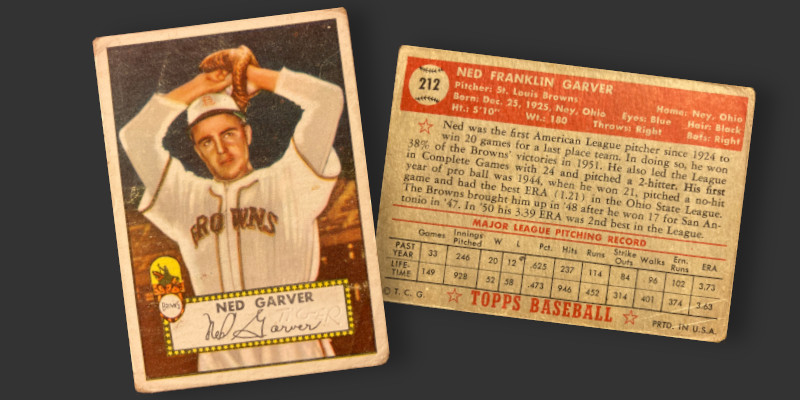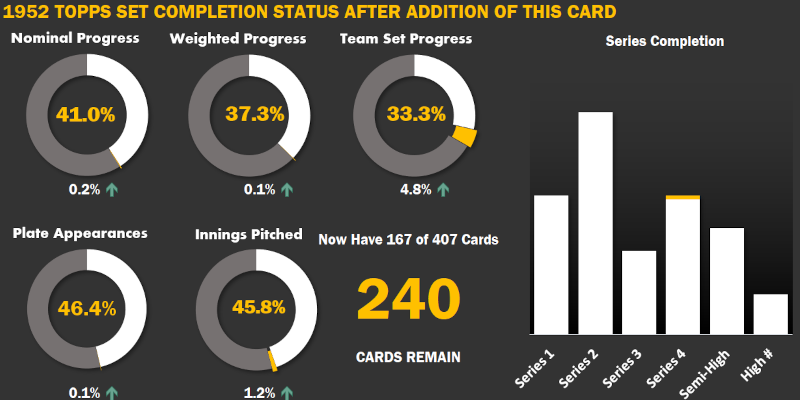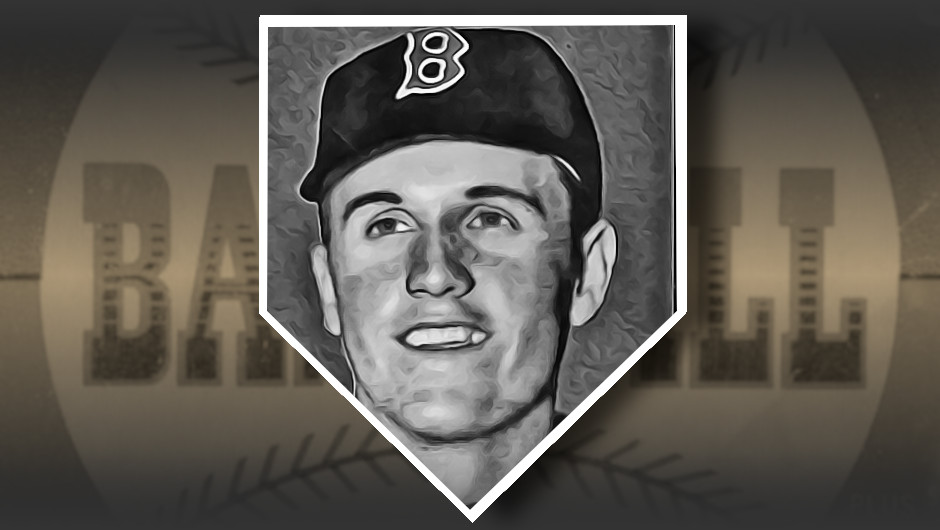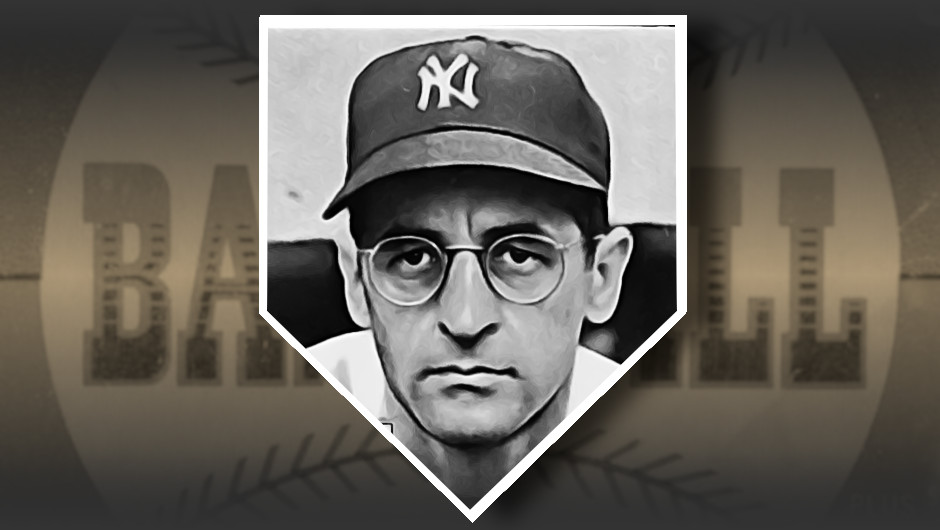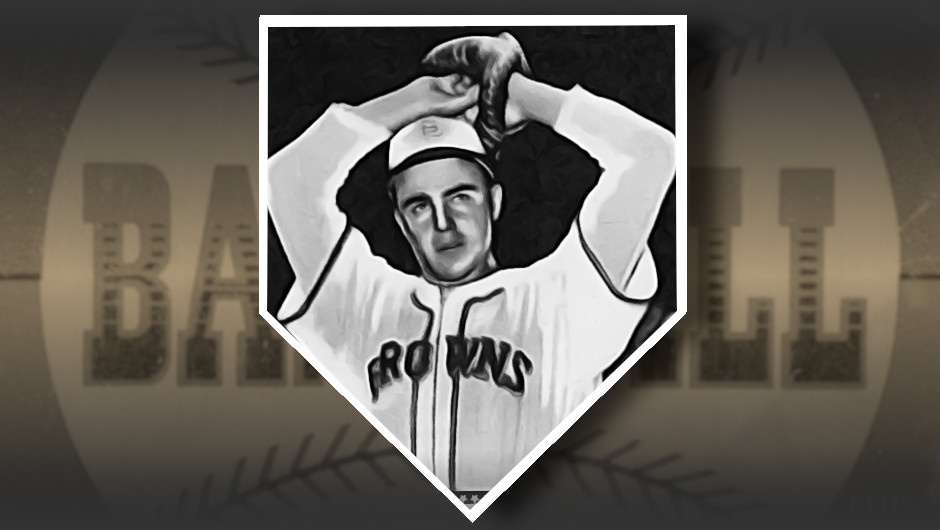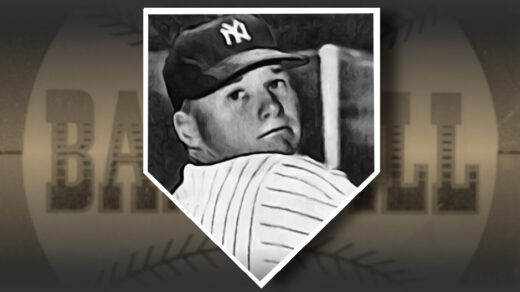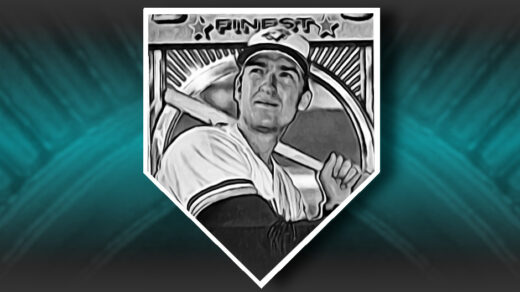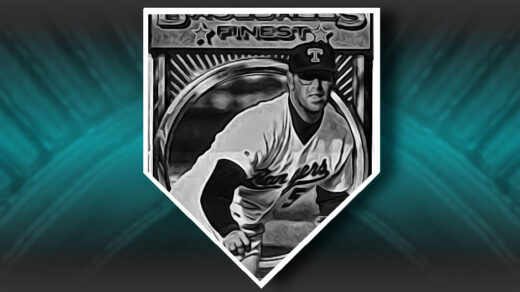Every single writeup about the career of Ned Garver, including his 1952 Topps baseball card, centers around the fact that he won 20 games for a last place team. His St. Louis Browns weren’t just bad, they were bad by bad team standards. The next-to-last place Washington Senators finished 10 games ahead of Garver’s team despite being known by the motto “First in war, first in peace, last in the American League.”
Garver’s contribution to such a sorry team was well known and should have carried him to victory in the race for the 1951 MVP. Instead, he finished just behind the Yankees’ Yogi Berra. Garver would have won had not the New York sportswriters completely left him off their ballots, shifting the award to Berra. Garver had certainly earned the title of most valuable player, as the Browns’ .262 win percentage in the games in which he did not appear is the fourth lowest in MLB history and the worst record since 1899.
So how good was this guy? He was almost universally a junk ball pitcher, rarely throwing directly across the plate and an expert at tricking opposing batters into swinging at bad pitches. A batter who reaches for something out of the strike zone rarely makes good contact, resulting in lots of weak grounders and shallow popups. The result was a 50/50 shot at a strikeout or walk (881 of each in his career) with many frustrated opponents who just couldn’t score against him.
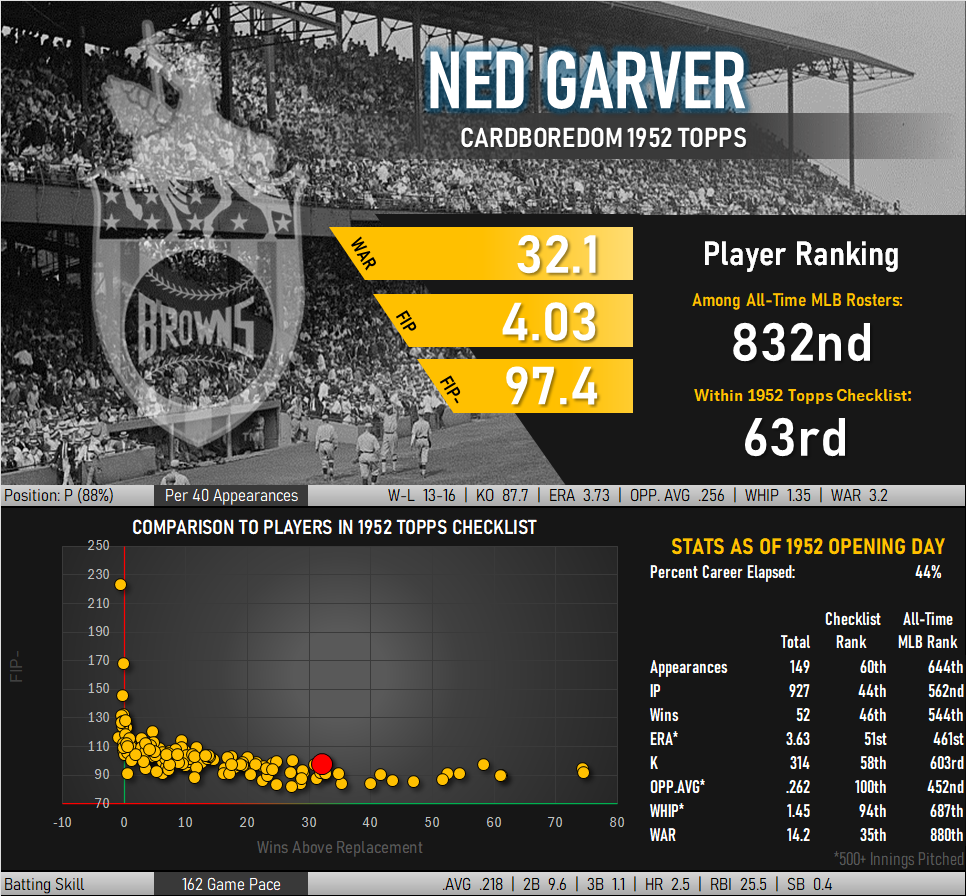
Adding Garver’s 1952 Topps Card to the Set
This card was yet another eBay purchase. It fits the not very helpful condition of “low-grade” assigned by the seller, but I’m not very picky when diving into the sub-$5 range for ’52 cards. What’s great about this particular example is that a previous owner sought to update Garver’s team affiliation after his August 1952 trade to the Tigers. “TIGER” is penciled in between Garver’s name and facsimile signature on the front of the card. It would be great to match this up with a similarly edited card of one of the three Detroit players that were received by the Browns in the same transaction. All six players involved in the trade are shown in the ’52 Topps set with their original teams, potentially shedding a bit of light on the timing of exactly when Topps went to press with each series.
